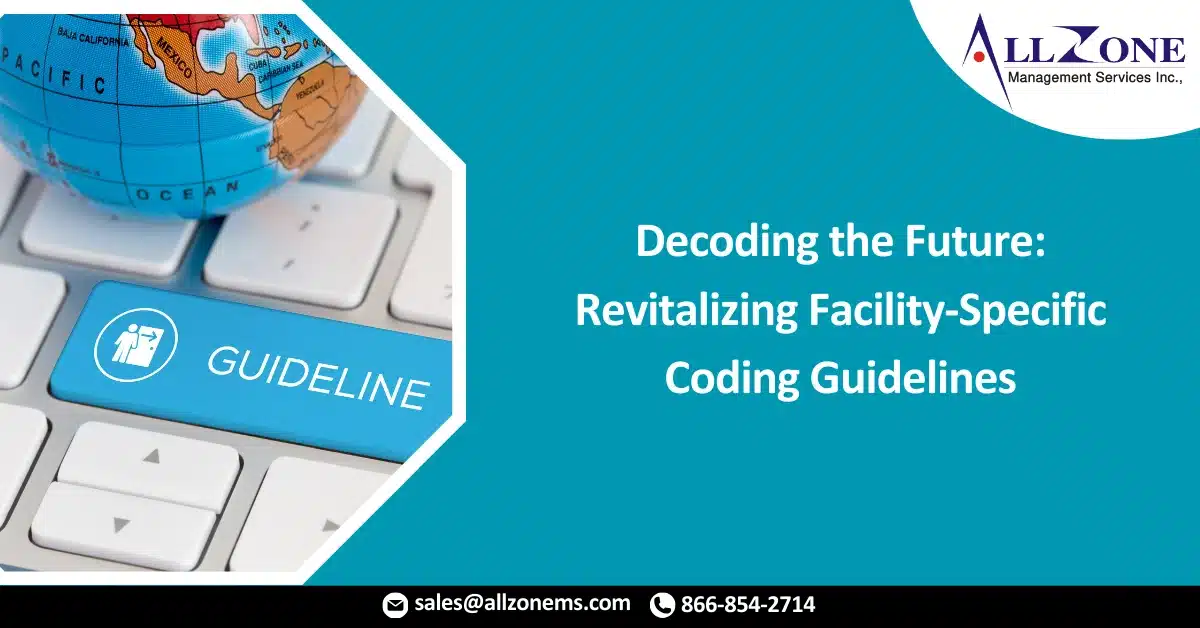Prepare for the upcoming release of the ICD-10-CM and ICD-10-PCS codes for the 2024 fiscal year (FY) – the latest development in the coding world. These codes are expected to be released soon, allowing facilities and vendors to make necessary preparations for implementation by October 1, 2023.
In the meantime, it’s crucial to review and establish facility-specific coding guidelines. If you don’t already have them in place, it’s time to develop them. These guidelines are tailored to address your facility’s unique data requirements. The advantages of having facility-specific coding guidelines are twofold: ensuring consistency among coders and the data collected, as well as eliminating the need to repeatedly address questions regarding code selection.
Now, let’s discuss the process of updating these guidelines. Start by identifying the documentation that is utilized during the coding process, such as all physician-signed or co-signed documentation. While most documentation falls under this category, there might be some exceptions to consider, such as documentation related to Social Determinants of Health (SDoH) or the documentation utilized for assigning body mass index (BMI) codes.
Inpatient procedures are another important area of focus. Your coders or contract coders may have questions about whether they should be coding certain procedures. Here are some procedure topics that may arise:
- Electroencephalogram (EEG)
- Computerized Tomograms (CT) / Computerized Tomography Angiograms (CTA)
- Magnetic Resonance Imaging (MRI)
- Echocardiograms
- Transfusions
- Peripherally Inserted Central Catheters (PICC)
- Midline Catheters
- Total Parenteral Nutrition
- Dialysis
When coding procedures, it’s crucial to provide a clear explanation. Remember, for every coded procedure, you need to assign the date of the procedure and the name of the performing physician.
Another important aspect to consider is the inclusion of New Technology Add-On Payment (NTAP) items. It’s crucial to identify these items since NTAP is typically triggered by specific ICD-10-PCS codes. It’s essential not to miss out on potential reimbursement. The list of NTAP items for FY 2023 can be found in the FY 2024 Inpatient Prospective Payment System (IPPS) Proposed Rule.
When it comes to diagnosis coding, there are several topics that need to be taken into account. In the absence of facility-specific coding guidelines, coders may question whether they should code the following:
- Family History
- Personal History
- Smoking Status
- Allergies
- Long-term Drug Use
- External Cause Codes
- Status Post-Procedures (e.g., history of Total Hip Arthroplasty)
Having clear guidelines in place helps address these coding uncertainties and ensures accurate and consistent coding practices.
In the case of a cancer registry, coding the family and personal history of cancer becomes important. Coders also need to consider coding for Hierarchical Condition Categories (HCCs), making the coding of long-term drug use significant. External cause code requirements vary among states, making it crucial to assign external cause codes. For instance, in Pennsylvania, the data commission mandates the assignment of an external cause code for every trauma code. Failure to assign the external cause code will result in the case failing the data commission processing and requiring correction.
Your facility guidelines should also cover physician queries, the official documentation for discharge disposition, addressing conflicts between coding and quality, Social Determinants of Health (SDoH), and abstracting. Writing the initial version of these guidelines may pose a challenge, but the benefits will far outweigh the effort invested.

